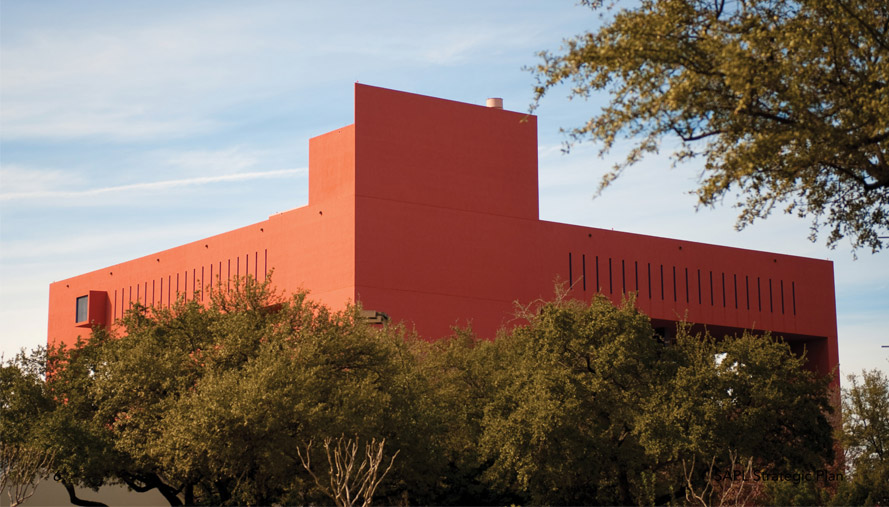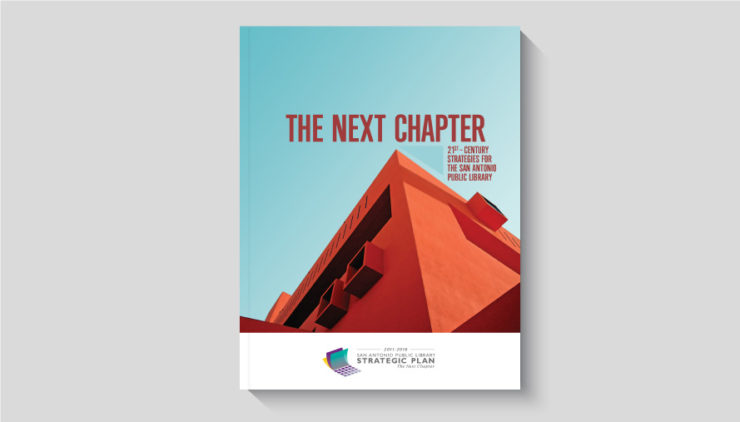In a time of great change and reinvention for libraries across the country, the 2011 San Antonio Public Library (SAPL) strategic plan provided a clear and cohesive vision of the future for the Library. The plan developed by Ivy Group library consultants and KGBTexas aimed to prepare and position the Library to adapt to changing market conditions and meet the needs of its customers in the Information Age.
In San Antonio, the opportunity could not have been greater. At the time the City was facing extraordinary educational challenges—25 percent of the population was functionally illiterate; the dropout rate was as high as 37 percent; and nearly 60 percent of San Antonio households had no broadband internet access. The size of these challenges was matched only by the ambitiousness of Mayor Julián Castro's plan to "orchestrate one of the greatest turnarounds in education in the United States" by the year 2020.

As the City's educational arm, the Libary is poised to serve as an indispensable partner to the City for the implementation of SA 2020, and the San Antonio Public Library Strategic Plan was developed to align with the broader goals of the community. With this Strategic Plan, the Library sets forth a new mission: San Antonio Public Library changes lives through the transformative power of information, imagination, and ideas.
The experts consultants from KGBTexas and Ivy Library drew from a variety of qualitative and quantitative research, including customer surveys, stakeholder interviews, analysis of peer-city libraries, market segmentation study and feedback from the Library Board, staff, support groups (Friends of the Library, San Antonio Library Foundation) and Leadership Advisory Committee, a group of business, civic and community leaders convened for the purpose of advising the development of this Strategic Plan.
From this process, emerged six strategic areas of focus, which are listed below:
- Support Educational and Learning Opportunities
- Support Workforce and Economic Development
- Foster Community Connections
- Develop Marketing and Communications
- Improve Organizational Health
- Delineate Roles of Board of Trustees and Library Support Groups
Specific strategies and "fast track" recommendations included:
- Expand and strengthen the Library's early literacy education programs to promote school readiness.
- Align the Library's programs and services with Texas Essential Knowledge and Skills (TEKS) by working with school districts and by providing training to librarians, teen liaisons, and other staff members.
- Expand the Library's Jobs and Small Business Center by developing a flexible, customizable model that complements existing assets at individual branches.
- Systematize computer and technology literacy instruction so that patrons acquire 21st-century literacies.
- Customize service delivery to needs of individual communities by piloting family-focused branches, storefront express branches and Spanish-focused branches to expand services to under penetrated neighborhoods.
- Allocate teen spaces within branches by creating venues for creative play, social use of technology and life success.
- Establish digital labs to provide opportunities for content creation.
- Raise the Library's profile by developing a comprehensive marketing and communications campaign that includes rebranding the Library, redesigning the website, incorporating mobile technologies and leveraging social and interactive media outlets.
- Draft Memorandums of Understanding between the Library Board of Trustees, the San Antonio Library Foundation and Friends of San Antonio Public Library that formalizes relationships, aligns goals and strategic plans, encourages collaboration and ensures accountability between each of the organizations involved in fundraising and advocacy.
- Create an Organizational Health Unit to nurture an organizational culture where accountability is an administrative priority at all levels.
- Encourage initiative, innovation, and recognized excellence to raise performance and morale.
- Prioritize technological adaptability and agility with respect to capital investments.
Category: Library Work
Tags: libraries, research, strategic plan
